Get a Taste of Quantum Mechanics
By SONG Jianlan
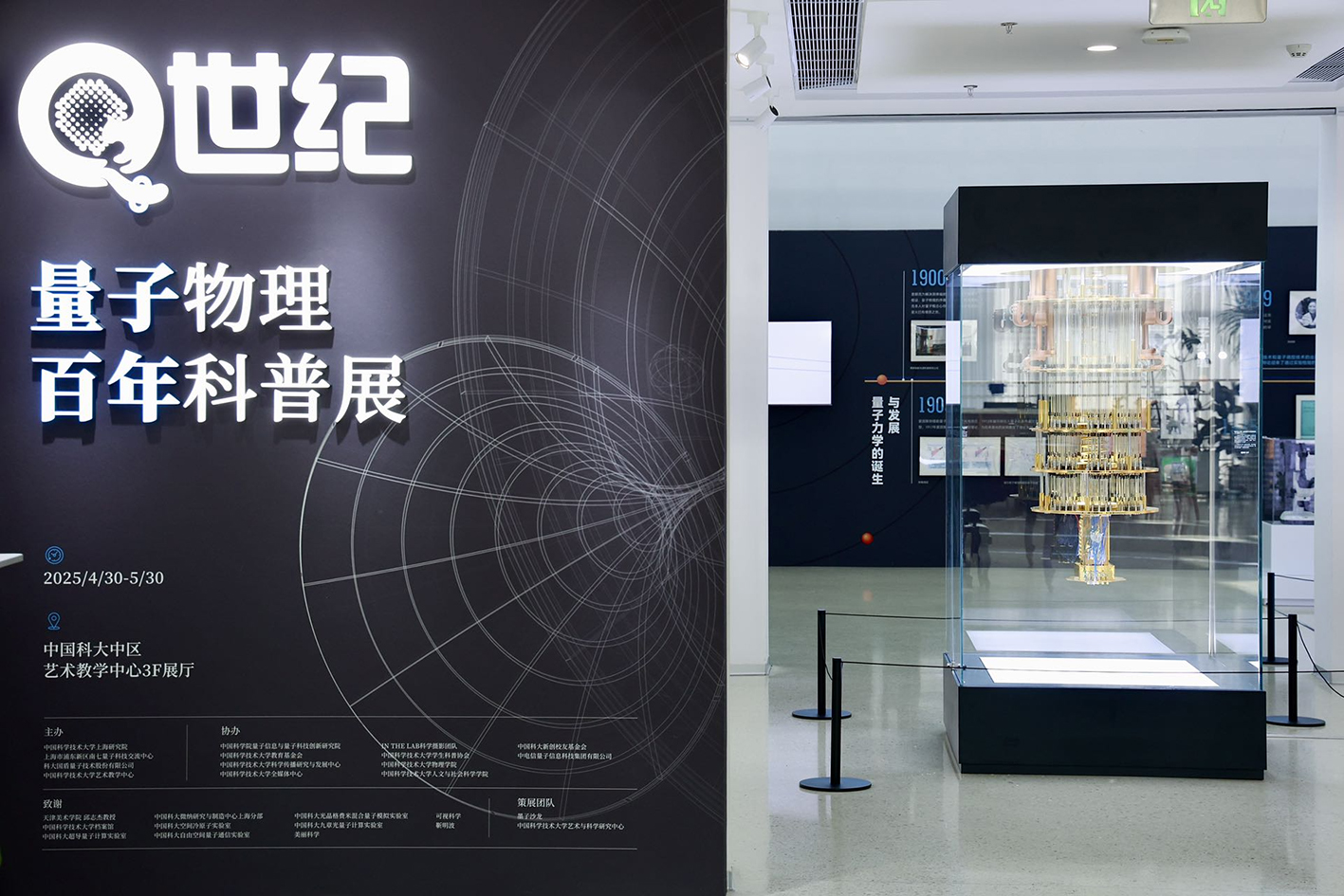
The entrance to the exhibition. In view is the full-scale model of Zuchongzhi-2, a superconducting quantum computer having outperformed most powerful contemporary supercomputer available. (Image: USTC)
On May 9, 2025 on the campus of the University of Science and Technology of China (USTC), Chinese Academy of Sciences (CAS), an exhibition was unveiled to celebrate the UN International Year of Quantum Science and Technology (IYQ) — a one-year-long worldwide event in memory of the founding of quantum mechanics (QM).
In preparing and sponsoring this exhibition, USTC aims to communicate and popularize QM knowledge to the wider society, to benefit the public.
“This year marks the 100th birthday of QM, therefore UNESCO announced 2025 as the UN IYO,” said CAS Member Prof. PAN Jianwei, a prestigious physicist dedicated to QM and also Vice President of USTC. “Over the past century, the science revolution inspired by QM has profoundly changed human society — it has long permeated many aspects of the human life, ranging from semiconductor, laser to magnetic resonance imaging technologies, and from superconductivity to global satellite positioning system,” he continued. “We hope the public would appreciate the glamor of QM — particularly, our children could have a taste of the quantum world.”
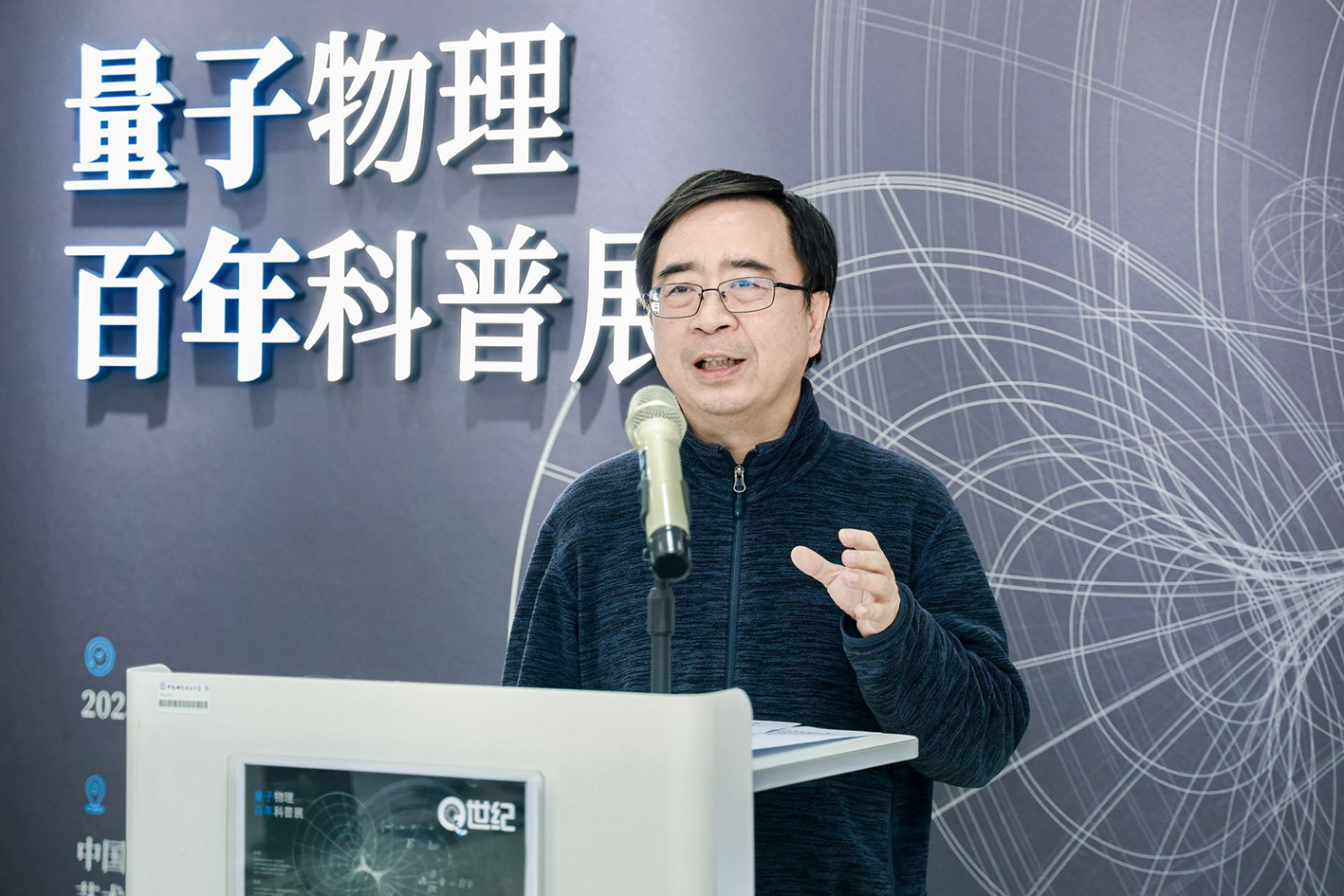
CAS Member Prof. PAN Jianwei, a prestigious physicist dedicated to quantum mechanics and also Vice President of USTC, addresses the opening of the exhibition. (Image: USTC)
QM of Today: Quantum Computer Prototype on Show
Centerpiece of the first part of the exhibition is a full-scale model of Zuchongzhi-2, a superconducting quantum computer, surrounded by posters illustrating details of its design and components. Built by a USTC group led by Prof. PAN and collaborators, the prototype adopts an architecture featuring 66 quantum bits (qubits) — all synchronized with each other in real time via a “spooky” physics effect that had even puzzled Albert Einstein — quantum entanglement. This prototype surpassed the most powerful traditional computer in 2023 to achieve quantum supremacy.
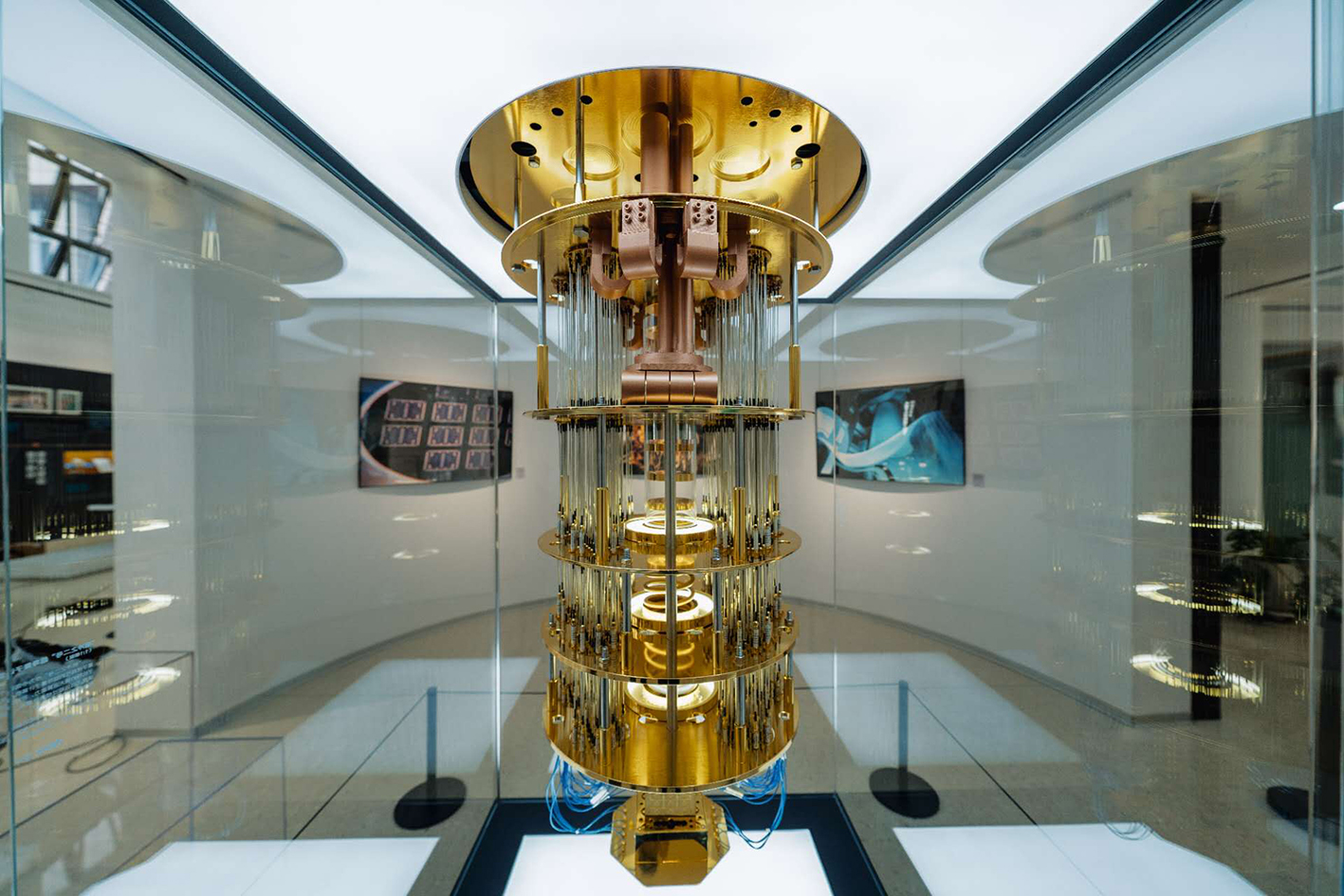
The full-scale model of Zuchongzhi-2 on exhibition. (Image: USTC)
PAN’s group first succeeded in 2004 in preparing and manipulating multi-particle quantum entanglement in experiments, and has since maintained the position of world record setter and keeper in terms of the number of entangled quantum photons manipulated in the same system.
In 2015, the team took the lead in achieving quantum teleportation of multiple degrees of freedom; later in December 2016, they further succeeded in achieving ten-photon entanglement, updating the world record maintained by themselves. By 2019, they had successfully extended the manipulation of entanglement to atoms, distributing two of them dozens of kilometers apart and meanwhile maintaining them in teleportation.
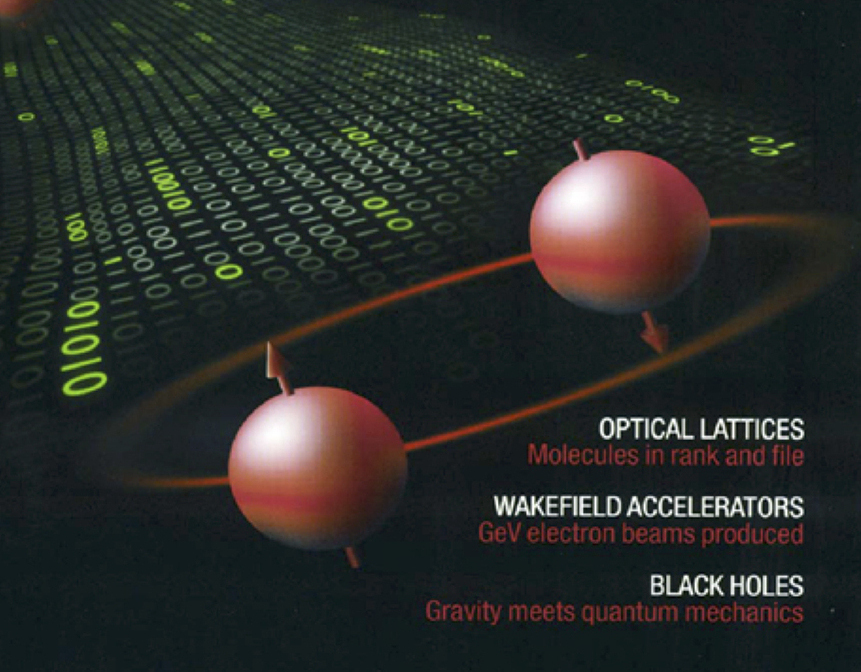
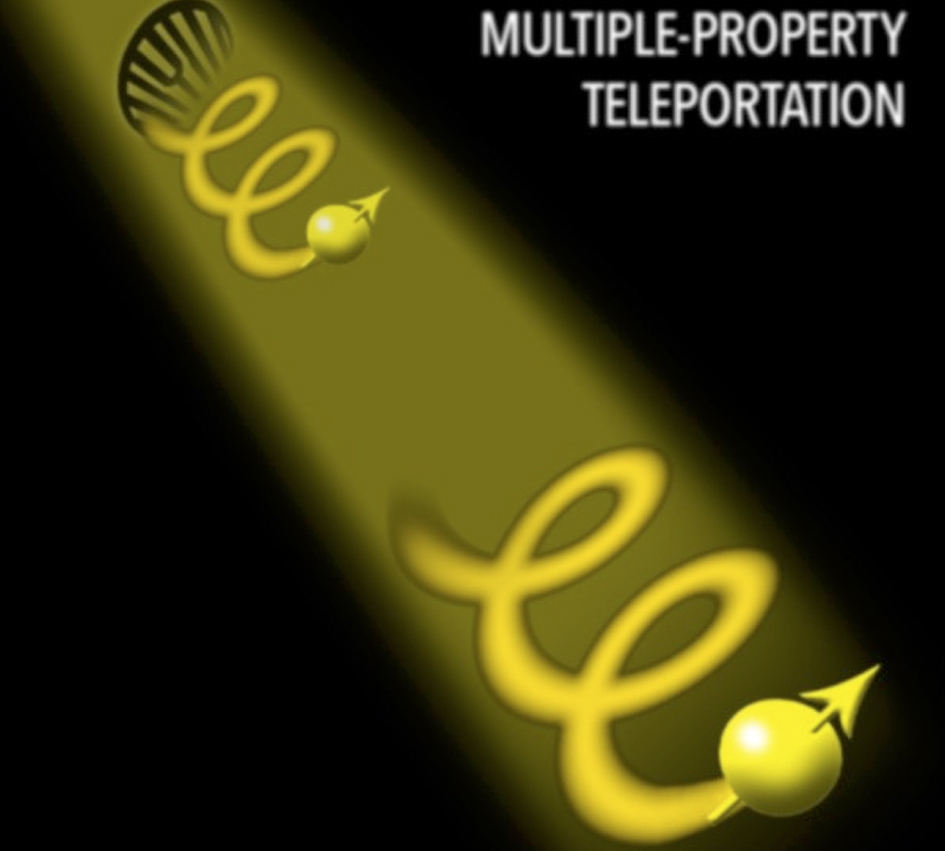
Laying the foundation: PAN’s team at USTC reported in Nature in 2006 how they achieved teleportation of a complex quantum system. Later in 2015, after breaking through a series of fundamental issues, the team reported successful quantum teleportation of multiple degrees of freedom of a single photon, again in Nature. Such breakthroughs in fundamental quantum mechanics have led to the development of quantum computing processor Jiuzhang and the Zuchongzhi serial prototypes. (Images: USTC)
Such breakthroughs have made possible their later experiments and development of quantum computer prototypes, laying the foundation for quantum computing in practice.
May 2017 saw the team and their partners successfully develop the first prototype quantum computer, based on entangled photonic qubits. The joint team went on to achieve 18-qubit entanglement in July 2018, and later in 2020 built Jiuzhang-1 based on 76 entangled photonic qubits. This quantum processor surpassed classical supercomputers available that time in solving random quantum circuit sampling — a benchmark problem to test quantum computers, achieving quantum supremacy. The Jiuzhang-1 prototype has now been selected by the National Museum of China as part of its collection in exhibition. Soon in 2023, Jiuzhang-3, an upgraded prototype, outperformed contemporarily the most powerful traditional supercomputer by 1016 orders of magnitude.
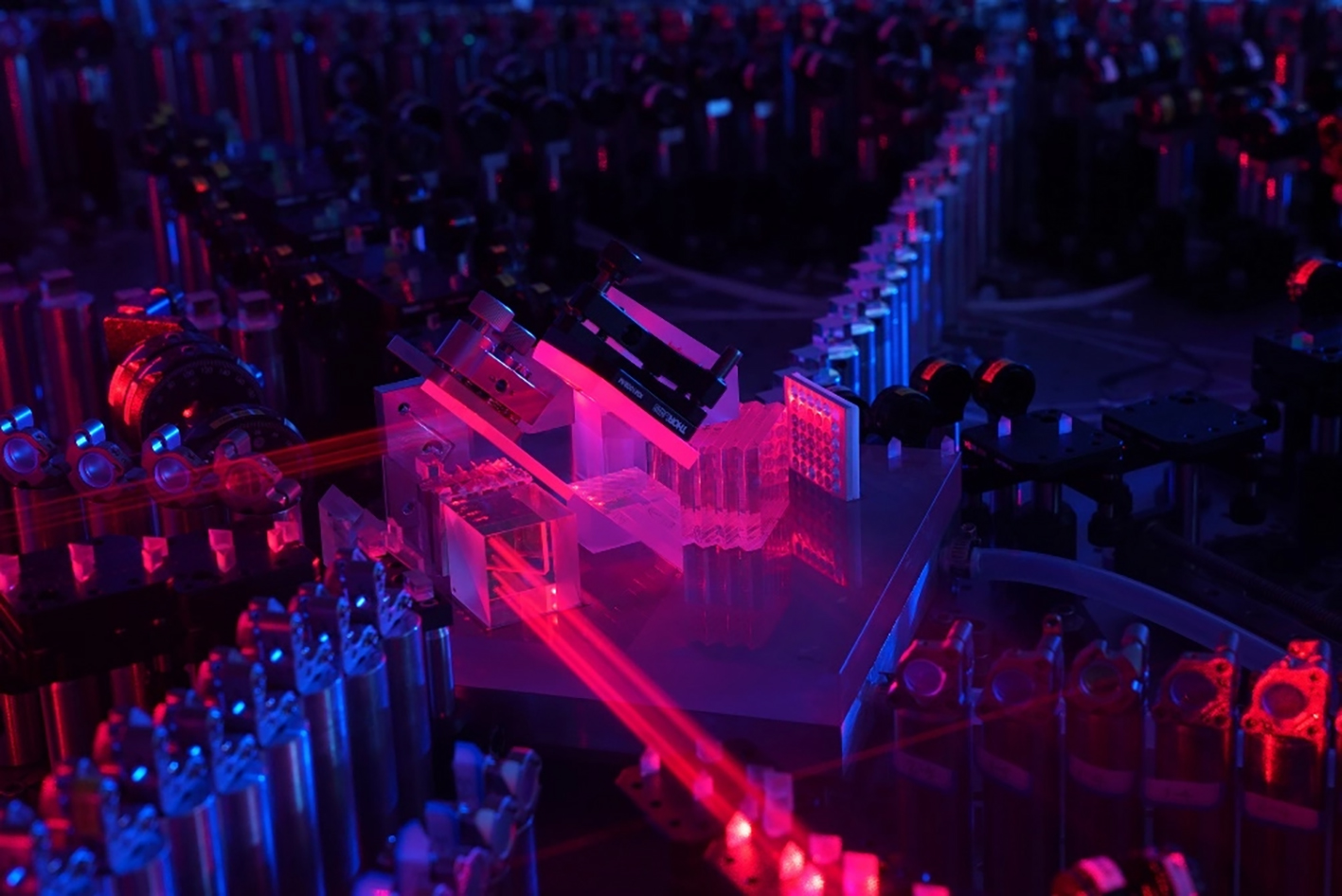
Jiuzhang-1, the first quantum computer in China to have achieved quantum supremacy: it outperformed contemporary top traditional supercomputers in 2020. (Image: USTC)
With Zuchongzhi-2, Chinese scientists have achieved quantum supremacy in two physical systems: the photonic qubit system and the superconducting qubit system. Now China is the only country in the world that has succeeded in achieving quantum supremacy in both systems.
At the exhibition, a raster screen keeps broadcasting a video, giving the detail of Zuchongzhi-2 in naked-eye 3D illustration. One can also see the microstructure of a quantum chip through a microscope.
Zuchongzhi-2 itself, however, was soon beaten by its successor in early March 2025. Zuchongzhi-3, a new superconducting quantum computer prototype involving 105 qubits and 182 couplers, solved the problem of random quantum circuit sampling 1015 times faster than the most advanced traditional supercomputer available that time. This marked a new milestone in quantum computing.
In Retrospect: Scintillating Constellation of Giants
How did we get here? The second section of the exhibition reviews the milestones of QM development, highlighting major debates and explorations by giants in the field — First of all the emergence of a new QM theory in opposition of the old one.
At the beginning of the 20th century, Max Planck proposed the concept of energy quanta, to overcome the difficulty of classical mechanics in explaining blackbody radiation. This anti-intuitive concept defines energy as a discrete value building on a very tiny “unit,” rather than a continuous physical quantity. In other words, energy is actually released as integral multiples of a certain tiny value. Based on this concept, Albert Einstein further proposed that light is composed of photons whose energy can be calculated as E = hv, where h is the Planck constant and v the speed of light.
The concept of the “quantum” was hence first introduced to human understanding. Upon this concept, the initial — now known as the “old” — quantum theory was established.
In July 1925, Werner Heisenberg published the paper “Über quantentheoretische Umdeutung kinematischer und mechanischer Beziehungen” (“Quantum-Theoretical Reinterpretation of Kinematic and Mechanical Relations”), elaborating his position on the problem of spectrum intensities of the electron, taking it as a one-dimensional vibrating system. He insisted that the explanation should only be based on observable quantities. His theory inspired further discussions and explorations between himself, Max Born, and Pascual Jordan. During this process, a framework of matrix mechanics took shape, which was later recognized as the first form of QM theory. The three published in November 1925 the “three-man paper” titled “Zur Quantenmechanik” (“On Quantum Mechanics II”), laying an important cornerstone of new QM.
The next year saw the proposal of the second form of new QM by Erwin Schrödinger — wave mechanics. The above milestone achievements have since set out a new frontier of physics, inspiring further explorations into the unknown microscopic world.
The dusts of old quantum science gradually settled down, and the era of new mechanics dawned — not without setbacks though. Over the past century, quantum mechanics has been at the center of prolonged debates on foundational issues — most notably its completeness — with renowned physicists proposing thought experiments to articulate and defend their interpretations. Among these thought experiments are Schrödinger’s cat, Einstein’s photon box, and the Einstein-Podolsky-Rosen (EPR) paradox. Now in this exhibition, visitors can find them in miniature.
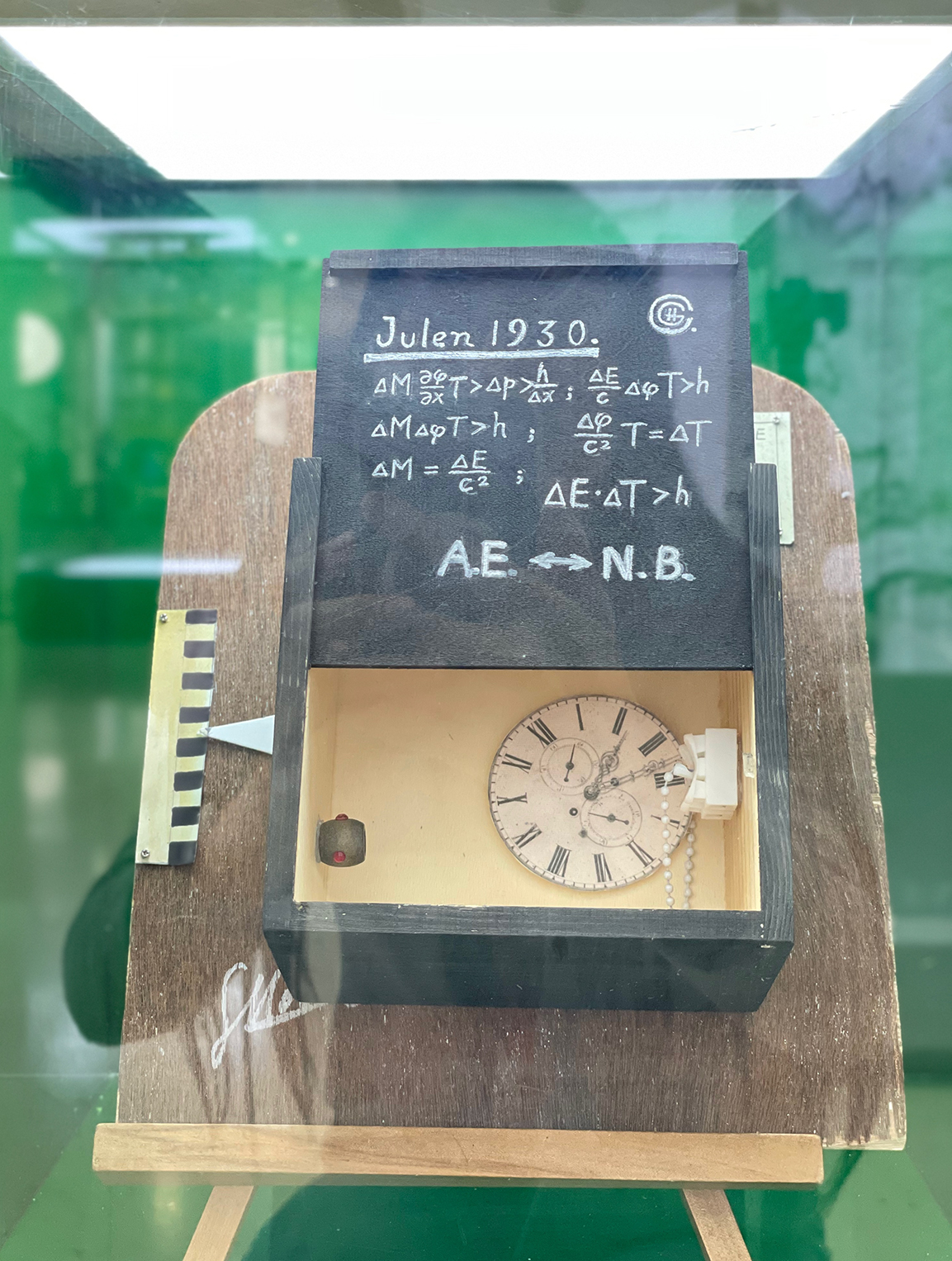
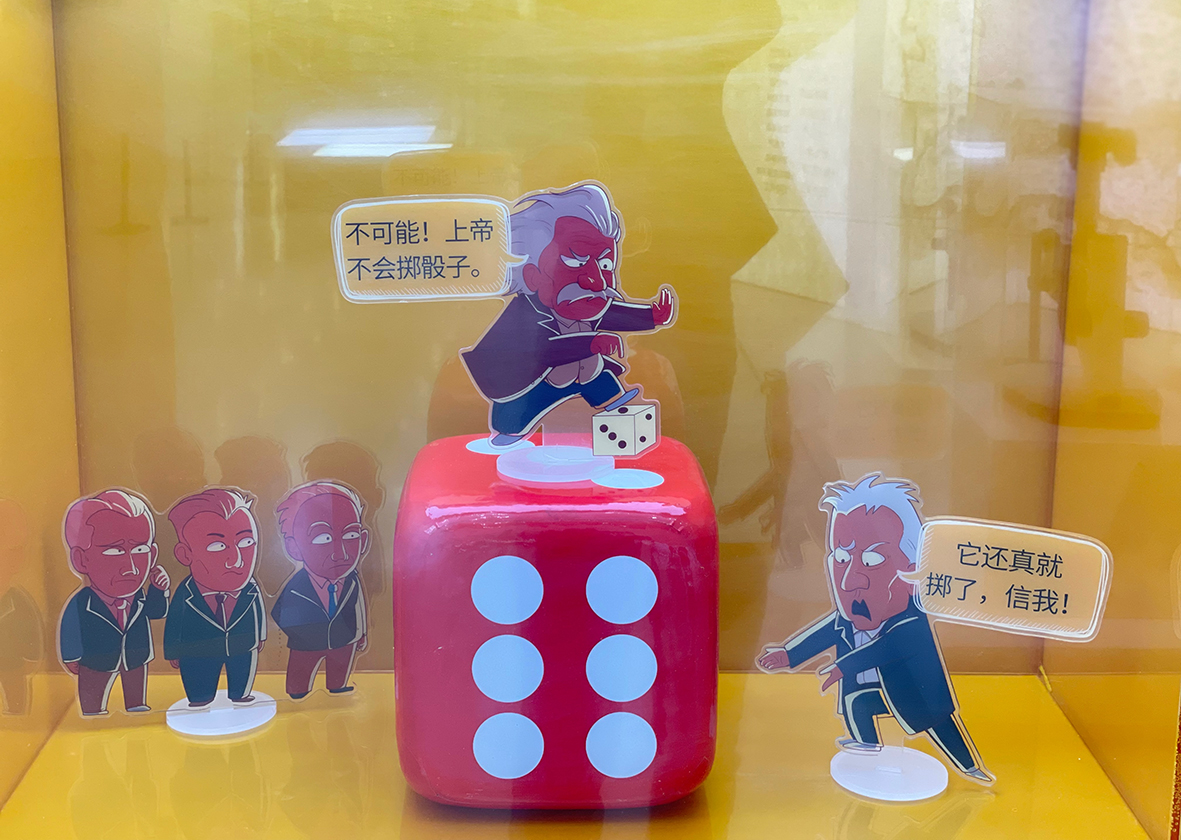
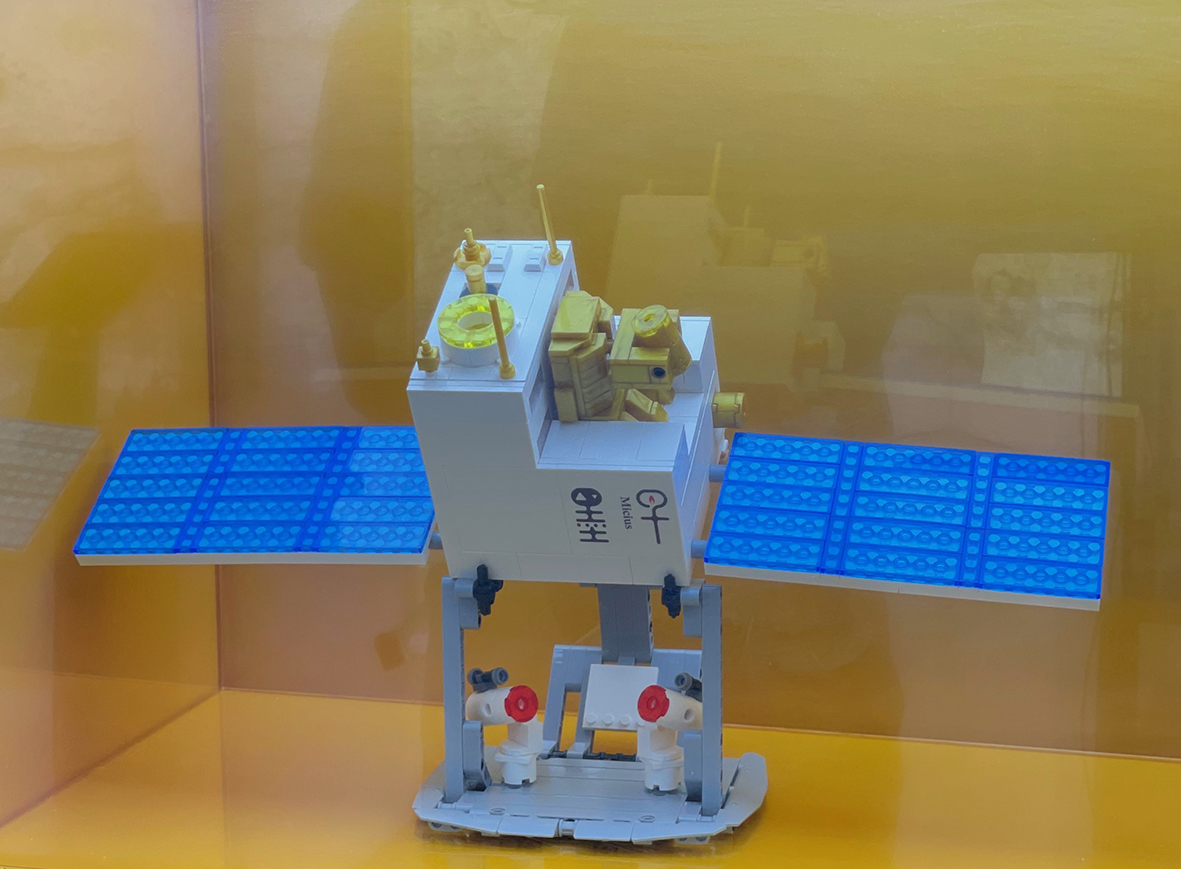
The exhibition illustrates some thought experiments well-known in the history of quantum mechanics with interesting models. Shown here is a model of Einstein’s photon box (left), and also his epigram: God does not play dice with the universe (middle). On show is also a model of Micius (right), a satellite for quantum communication experiments. (Images: SONG JL)
With the developments of laser and quantum manipulation techniques, scientists can accurately control the quantum state of micro-particles to verify such thought experiments. As a result, quantum communication and quantum computing emerged and advanced rapidly. On show in the exhibition are photos of some historical episodes, including the experiment settings of the BB84 protocol devised by Bennett and Brassard in 1984. This very protocol has later developed into quantum key distribution (QKD), which underlies current quantum encrypted communication.
Among the exhibits are a small model of Micius, the satellite launched in 2016 for quantum communication experiments. Its name came from an ancient scientist of China, Micius (Mozi). On this satellite, Chinese physicists represented by Prof. PAN’s team verified teleportation between photons at different distances, and experimented quantum communication across continents.

On the satellite Micius, three major experiments were conducted in 2017. First was the quantum entanglement distribution (QED) over a distance of 2,400 km in June, then quantum key distribution (QKD) and quantum teleportation (QT) experiments in August. The latter two successfully passed through a distance of approximately 1,200 km. These experiments paved the way for the later development of quantum communication equipment and infrastructure in China. Illustrated here is an image of overlaid time-lapse photograph tracking the laser beams to and from the satellite over the Xinglong station in Hebei province of China. The red laser is sent from the ground as a beacon for the satellite to track and lock on; and the green one, carrying quantum keys, is sent from the satellite for the ground station to pick up. (Photo: USTC)
On a tablet platform in the exhibition, visitors can try communicating with each other using quantum encryption and decoding: the sender can send a message through the system, and the receiver, without using a decoder, can only read a totally different message in the displayer — it is an encrypted message in disguise of a “revised” one, as processed by quantum cryptography in the background. Only when using a decoder can the receiver read the original message. The inbuilt cryptography and decoder are both based on the research by USTC scientists.
How QM Feels Like
How does QM feel like? An ink painting centered to the third part of the exhibition might represent the view from an artist. Named the Atlas of Science and Technology History, this artefact depicts the ups and downs of science in history — the debates and events occurring from ancient times till today — as imaginary mountains, all in a scroll.
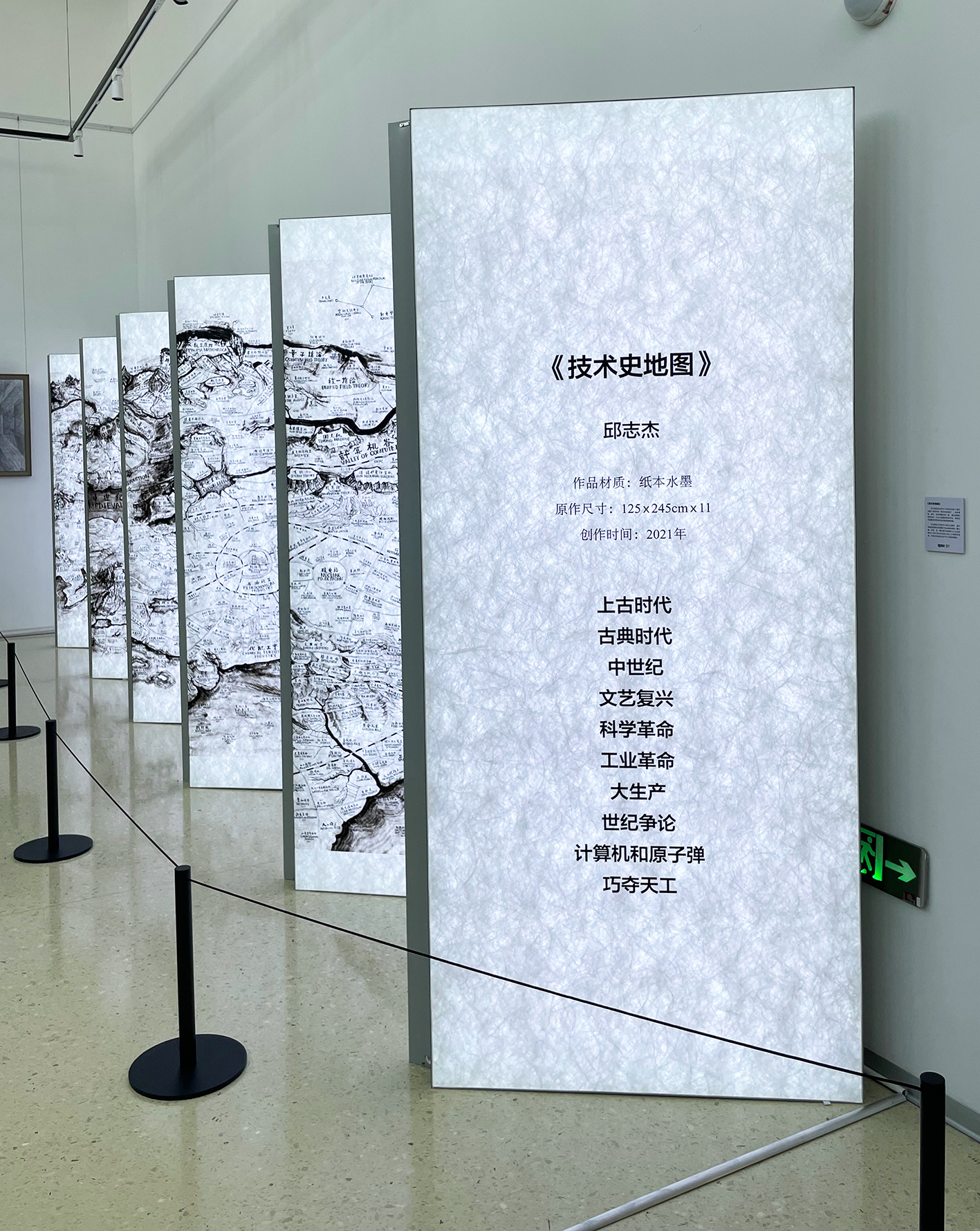
Left: The ink painting Atlas of Science and Technology History by QIU Zhijie. (Image: SONG JL)
One can even hear QM at the exhibition. Scientists recorded the sounds from the QM world — flows of liquid helium, electromagnetic noises of the equipment array, and the talks between scientists in their experiments... — and rearrange them into an album of music. At the exhibition visitors can put on the headphone to experience the quantum world. This album has been uploaded online to make available for more people.

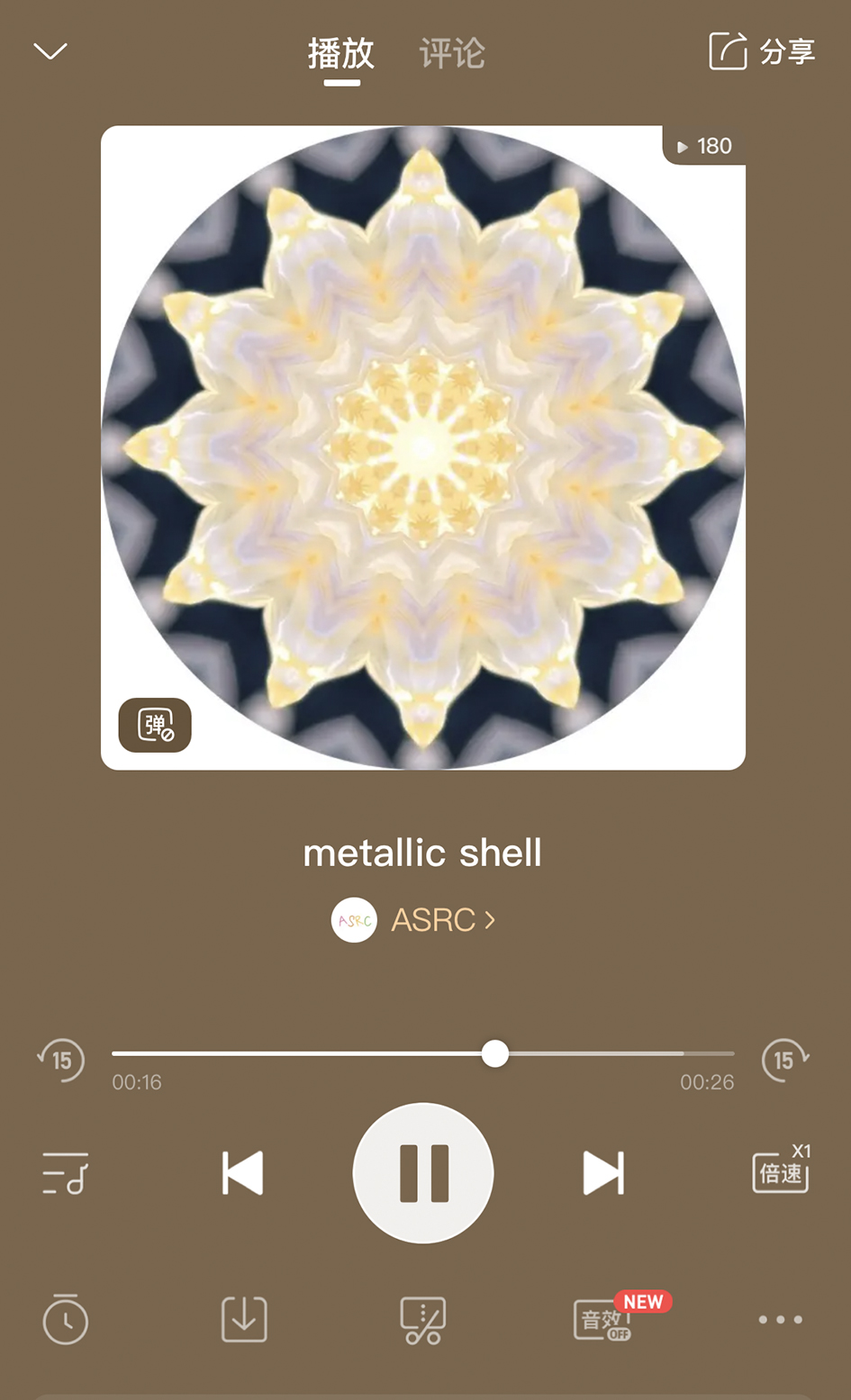
Left: The musical studio of quantum mechanics. (Image: SONG JL)
Right: A piece from the album of QM music as seen on the music app Ximalaya (Himalaya).
On the wall of the exhibition hall one can see a lot of beautiful posters — many are extracted from the researches published by USTC scientists, particularly those picked by editors of top journals like Science and Nature as cover papers. Every poster is attached with a short introduction and a QR code, from where one can be directed to an explanation of the involved research — all in easy language for lay people.
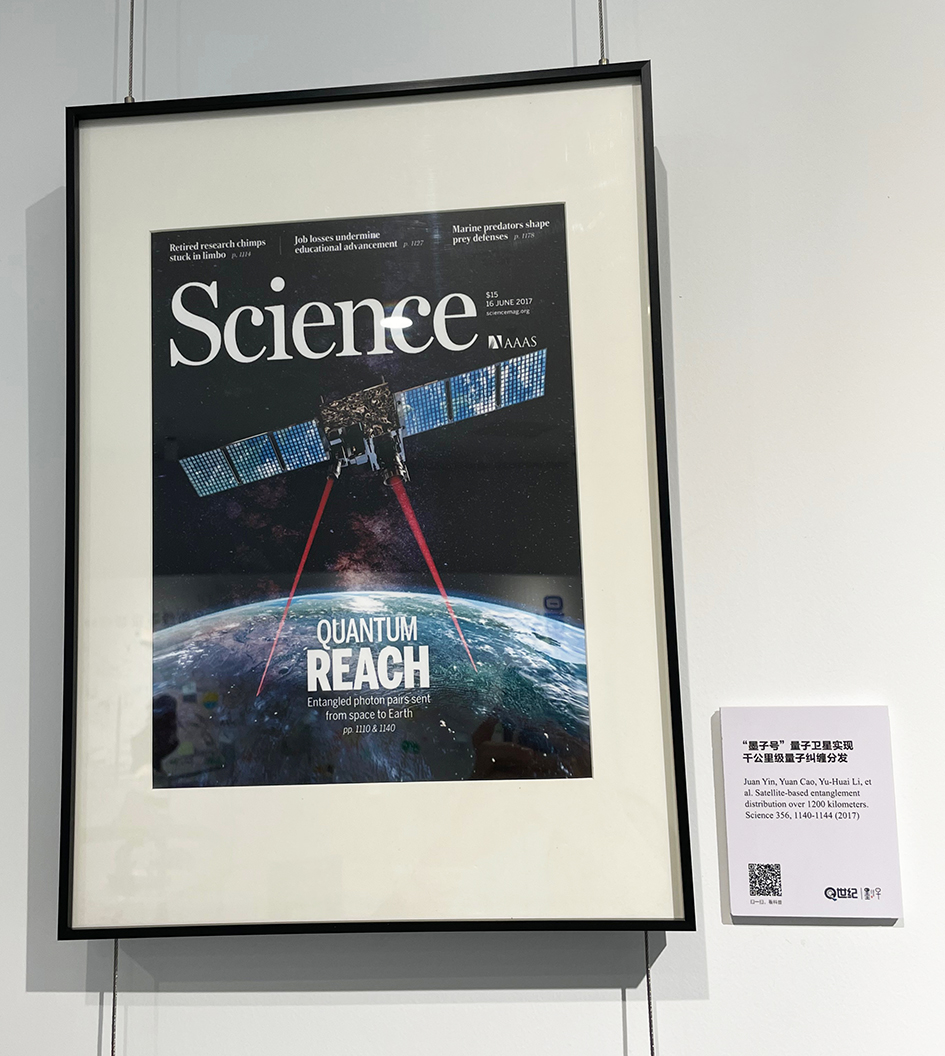
A poster for a cover paper published in Science reporting results from an experiment on Micius. (Image: SONG JL)
Jointly sponsored by the Shanghai Research Academy of USTC and the Nanqi Exchange Center of Quantum Science and Technology of Shanghai, the exhibition will tour to Shanghai in August to reach more people, according to USTC.

